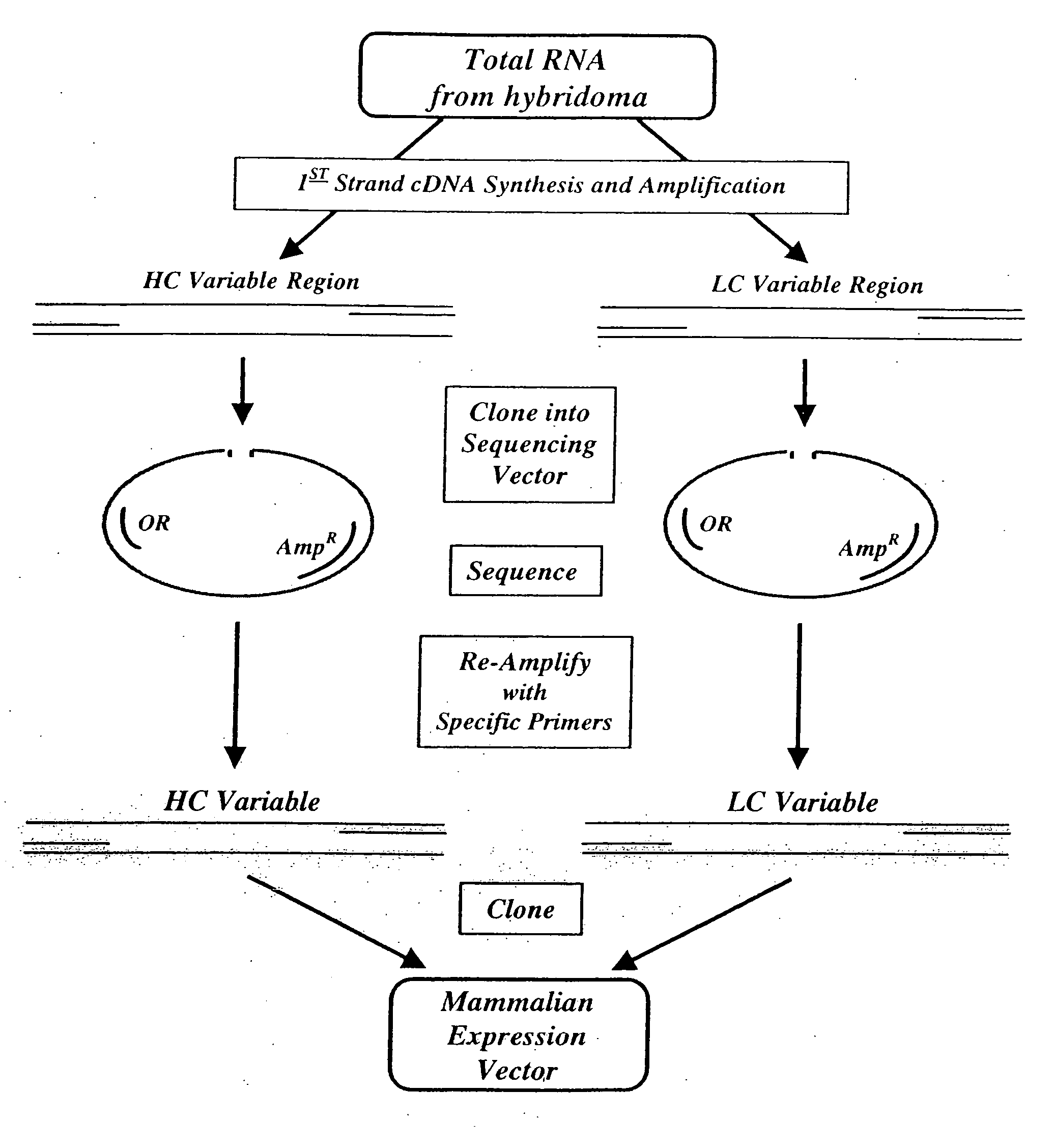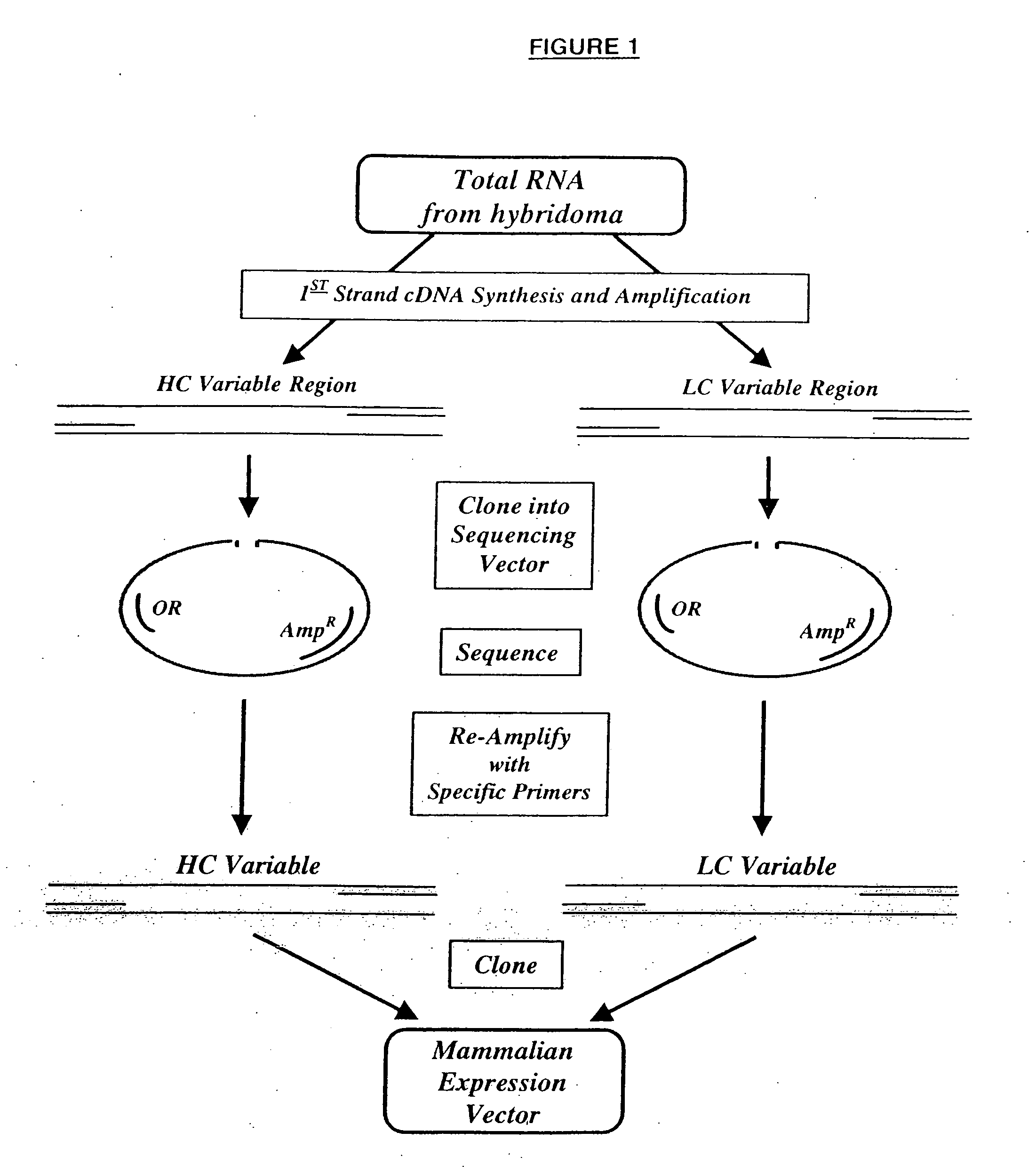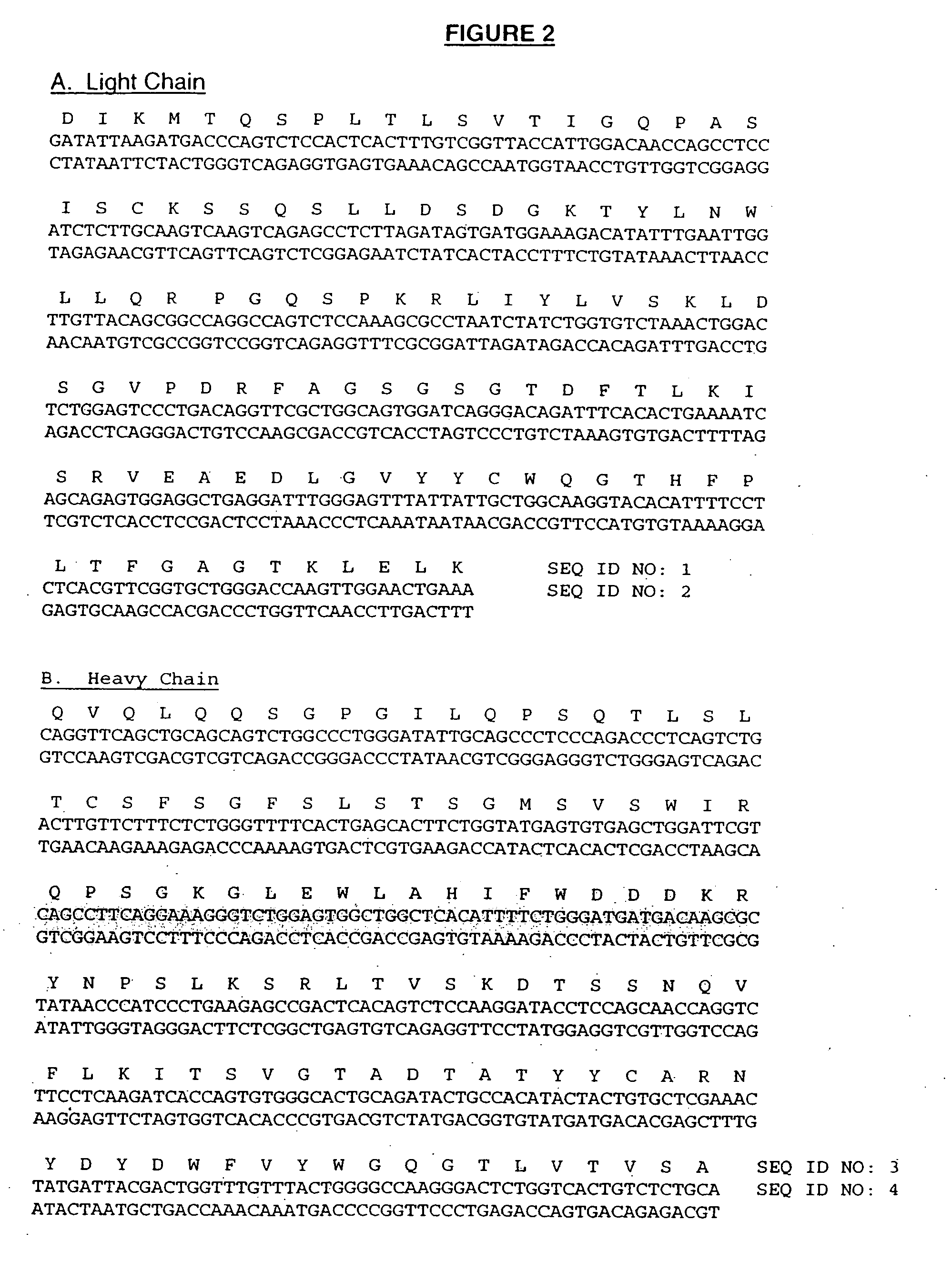Multifunctional monoclonal antibodies directed to peptidoglycan of gram-positive bacteria
a gram-positive bacteria, multi-functional technology, applied in the field of immunology and infectious diseases, can solve the problems of host invasion, infection and occasionally death, and the purity of cell wall preparations cannot be verified, so as to enhance phagocytosis and kill gram-positive bacteria, block colonization, and enhance phagocytosis
- Summary
- Abstract
- Description
- Claims
- Application Information
AI Technical Summary
Benefits of technology
Problems solved by technology
Method used
Image
Examples
example 1
The Production of Hybridomas and Monoclonal Antibodies to S. aureus PepG Immunization of Mice
[0112] To produce monoclonal antibodies directed against S. aureus PepG, immunizations were carried out using 5-6 week old female BALB / c mice, obtained from Harlan Sprague Dawley (Indianapolis, Ind.). The immunogen for the primary immunization was S. aureus PepG (gift from Roman Dziarski; PepG can also prepared as described in Example 2). Five microliters of PepG (7 mg / ml suspension) was mixed with 345 μl of PBS and 350 μl of RIBI adjuvant (RIBI Immunochemicals, Hamilton, N.H.). The resulting suspension contained 50 μg / ml of PepG. Each mouse was immunized with a subcutaneous (sc) dose of 0.1 ml (5 μg per mouse).
[0113] Approximately four weeks following the initial immunization, a booster immunization was given. PBS (873 μl) was mixed with 7.1 μl of PepG (7 mg / ml suspension) and 120 μl of Alhydrogel (Accurate Chemical and Scientific, Co., Westbury, N.Y.). Each mouse received an sc dose of 0...
example 2
Production of Hybridomas and Monoclonal Antibodies to B. subtilis PepG Purification of Peptidoglycan
[0122]Bacillus subtilis HR (gift of Howard Roger, University of Kent, UK) vegetative cell walls were made as previously described under stringent conditions, using lipopolysaccharide-free materials (6, 38), which are herein incorporated for any purpose). Proteins were removed from the peptidoglycan by treatment with pronase, and teichoic acid and other attached polymers were removed by treatment with HF (48% v / v) for 24 h at 4° C. The insoluble peptidoglycan was pelleted by centrifugation (13,000 g, 5 min, 4° C.) and resuspended in distilled water to 2 mg / ml PepG. This step was repeated once. The peptidoglycan was then pelleted and resuspended in 50 mM Tris HCl pH7.5 to 2 mg / ml PepG, and this step was repeated once. Finally, the peptidoglycan was pelleted and resuspended in distilled water to 2 mg / ml PepG three more times. The peptidoglycan was resuspended at about 10 mg / ml in distil...
example 3
Substrate Affinities of PepG Antibodies
Cellosyl Digestion of PepG
[0132] PepG from Bacillus subtilis, Staphylococcus aureus, Streptococcus mutans, Bacillus megaterium, Enterococcus faecalis, Staphylococcus epidermidis, and Listeria monocytogenes was purified as described in Example 2. One milliliter of each PepG (10 mg / ml) in 25 mM sodium phosphate buffer pH5.6 was digested with 250 μg / ml cellosyl (Hoechst AG) for 15 hours at 37° C. The samples were boiled for 3 minutes to stop the reaction and insoluble material was removed by centrifugation (14,000×g for 8 minutes at room temperature). The soluble cellosyl-digested PepG was stored at −20° C.
[0133] Staphylococcal PepG has a unique pentaglycine crossbridge, which can be cleaved by lysostaphin, a glycine-glycine endopeptidase. Lysostaphin (25 μg / ml; Sigma Cat No. L0761) was added to the cellosyl digestion of S. aureus and S. epidermidis PepG to cleave this peptide cross bridge. S. aureus was also digested without lysostaphin.
ELI...
PUM
| Property | Measurement | Unit |
|---|---|---|
| temperature | aaaaa | aaaaa |
| time | aaaaa | aaaaa |
| volumes | aaaaa | aaaaa |
Abstract
Description
Claims
Application Information
 Login to View More
Login to View More - R&D
- Intellectual Property
- Life Sciences
- Materials
- Tech Scout
- Unparalleled Data Quality
- Higher Quality Content
- 60% Fewer Hallucinations
Browse by: Latest US Patents, China's latest patents, Technical Efficacy Thesaurus, Application Domain, Technology Topic, Popular Technical Reports.
© 2025 PatSnap. All rights reserved.Legal|Privacy policy|Modern Slavery Act Transparency Statement|Sitemap|About US| Contact US: help@patsnap.com



